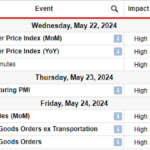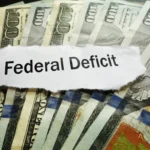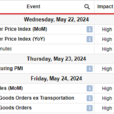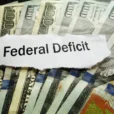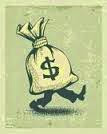

The U.S. dollar extended its recent gains against the major currencies. The euro returned to its break out level near $1.1060 after approaching $1.15 at the end of last week. In three sessions it has surrendered more than 38% of its bounce off the low set in mid-March. The 50% retracement comes in just below $1.10.
The dollar also traded above JPY121.00 for the first time since March 20. Rallying Nikkei and US 10-year bond yields near 2.30% provided the fuel.
Sterling, which as of yesterday had fallen 3.5 cents last week’s high, is recording an inside day, helped by the BOE minutes. The minutes showed two MPC members are considering a near-term hike, while others agreed that the remaining slack in the economy will be absorbed over the next year.
Contrasting news streams has been the main impetus to the dollar’s recovery. The Dollar Index is up about 3% this week and is above its 20-day moving average (~95.05) for the first time in nearly a month.
Investors have learned this week (from the San Francisco Federal Reserve) that a seasonal quirk probably lies behind part of the repeated weakness reported in Q1 growth. Yesterday, the US reported a 20.2% month-over-month rise in April housing starts and an upward revision to March. Permits, a leading indicator, rose 10.1%. Starts are up 9.2% year-over-year and permits are up 6.4%. Talk that had been creeping in of a new recession in the US is wide of the mark. Weekly initial jobless claims (tomorrow) are near cyclical lows. The unemployment rate (narrow and broad measures) is falling. This is not the stuff recessions are made of.
In contrast, the ECB officials have indicated that the asset purchases will be front-loaded in May and June due to seasonal considerations. Despite the easing of deflationary forces (Nowotny says deflation has been averted) and better growth numbers, talk of early tapering has also been dismissed. Yesterday Noyer warned that instead the bond purchase program can be extended past September 2016 if needed. This is not so much new as a timely reminder. Nearly every country that has implemented QE has had to do more than what it initially anticipated.



